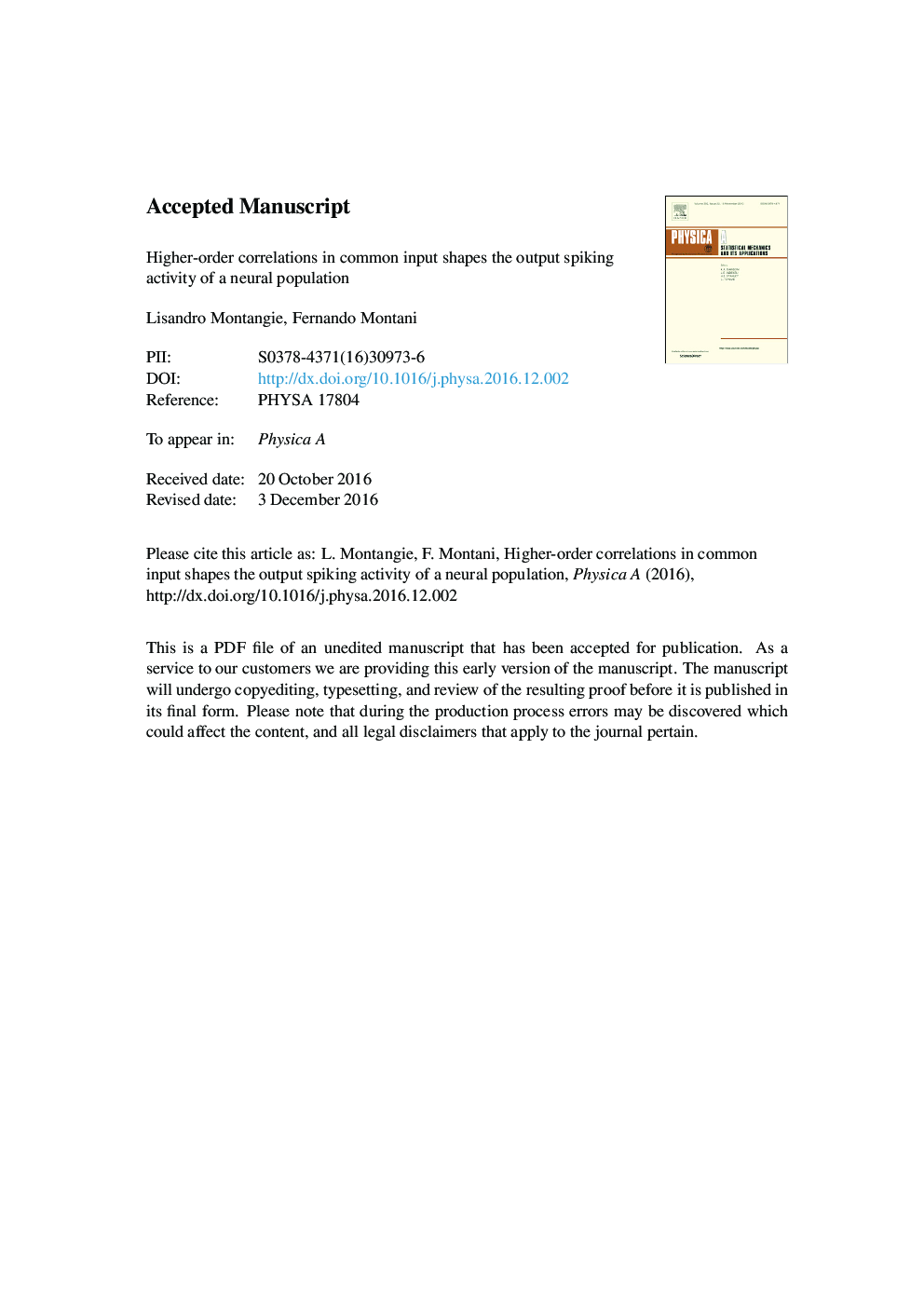| Article ID | Journal | Published Year | Pages | File Type |
|---|---|---|---|---|
| 5102956 | Physica A: Statistical Mechanics and its Applications | 2017 | 33 Pages |
Abstract
Recent neurophysiological experiments suggest that populations of neurons use a computational scheme in which spike timing is regulated by common non-Gaussian inputs across neurons. The presence of beyond-pairwise correlations in the neuronal inputs and the spiking outputs following a non-Gaussian statistics elicits the need of developing a new theoretical framework taking into account the complexity of synchronous activity patterns. To this end, we quantify the amount of higher-order correlations in the common neuronal inputs and outputs of a population of neurons. We provide a novel formalism, of easy numerical implementation, that can capture the subtle changes of the inputs heterogeneities. Within our approach, correlations across neurons arise from q-Gaussian inputs into threshold neurons and higher-order correlations in the spiking outputs activity are quantified by the parameter q. We present an exhaustive analysis of how input statistics are transformed in this threshold process into output statistics, and we show under which conditions higher-order correlations can lead to either bigger or smaller number of synchronized spikes in the neural population outputs.
Related Topics
Physical Sciences and Engineering
Mathematics
Mathematical Physics
Authors
Lisandro Montangie, Fernando Montani,
